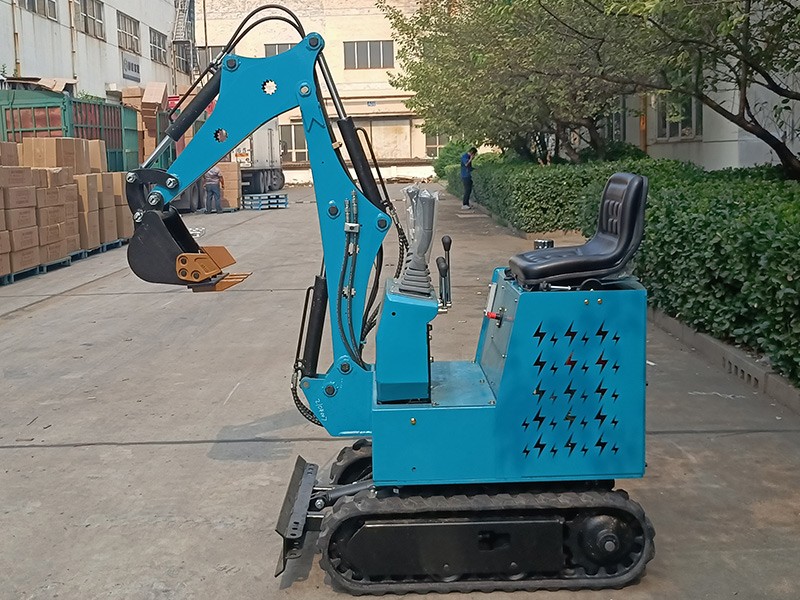Single bucket excavator is a common type of excavator. Its working principle involves many aspects, including mechanical, hydraulic and electrical aspects. The following is a detailed description of the working principle of a single bucket excavator:
Mechanical structure:
The mechanical structure of a single-bucket excavator mainly consists of a bucket, a bucket rod, a boom, a slewing device, and a crawler traveling mechanism. The bucket is the excavation tool of the excavator. The excavation action is achieved through the expansion and contraction of the bucket rod and the rotation of the slewing device. The boom plays a supporting role, and at the same time, the hydraulic system controls the lifting and lowering of the boom to adjust the excavation depth and height of the excavator. The crawler running mechanism enables the excavator to walk and work stably in various terrain and soil conditions.
Hydraulic system:
The hydraulic system of a single bucket excavator is mainly composed of a hydraulic pump, a hydraulic cylinder, a hydraulic valve, etc. The hydraulic pump converts the power of the engine into hydraulic energy, and drives the expansion, contraction and rotation of the boom, stick and other components through the hydraulic cylinder. Hydraulic valves are used to control the flow and direction of hydraulic oil, thereby controlling the movement of the excavator.
Electrical System:
The electrical system of a single bucket excavator is mainly composed of engine control system, hydraulic control system, sensors, etc. The engine control system controls the engine speed and fuel injection volume to make the engine work at its best. The hydraulic control system monitors the pressure and flow of the hydraulic system through sensors to achieve precise control of the excavator.
working principle:
The working principle of a single-bucket excavator is mainly to realize the excavation action through the excavation of the bucket and the expansion and contraction of the arm. When the bucket comes into contact with the soil, the soil is dug out of the bucket and unloaded to the designated location through the expansion and contraction of the bucket rod and the rotation of the slewing device. At the same time, the excavation depth and height can be adjusted by raising and lowering the boom, allowing the excavator to adapt to different excavation needs.
Operation method:
The operation methods of single bucket excavators usually include manual operation and remote control operation. Manual operation means that the driver directly operates various parts of the excavator to realize the excavation action. Remote control operation is to remotely control the movement of the excavator through equipment such as a remote control or joystick.
Application areas:
Single bucket excavators are widely used in construction, road construction, water conservancy projects, mining and other fields. In the construction field, single bucket excavators can be used for foundation excavation, earth excavation and other operations; in the road construction field, they can be used for road construction, pipeline laying and other operations; in the water conservancy engineering field, they can be used for reservoir construction, dam reinforcement and other operations; in mining In the field of mining, it can be used for ore mining, ore crushing and other operations.
In short, the working principle of a single bucket excavator involves many aspects, including mechanical structure, hydraulic system, electrical system and working principle. Through the understanding and analysis of these aspects, the working principle and application fields of single bucket excavators can be better understood and mastered.
